Many hobby chefs find it difficult to prepare a steak perfectly. The solution is to prepare the steak sous vide . This blog contains the most important components to prepare a steak sous vide perfectly.
Anyone can prepare sous vide steak
The best way to cook a steak is to prepare it sous vide . The outside of the meat has a crispy golden brown crust. The inside of the meat is juicy, full of flavor and has an even pink color. Take a matching red wine for the perfect combination.
Everyone has tried to prepare a tender steak sous vide at least once. They have probably come out in all sorts of variations: too raw, cold, bloody or even tough. Stress can arise during preparation. The steak has to be removed from the oven or pan in time. With traditional preparation, this is a matter of seconds.
In addition, many people think that the perfect steak can only be obtained in a restaurant. This is not true. Not anymore recently anyway. The reason for this is that everyone can now cook sous vide at home. It is therefore possible to prepare the perfect steak at home , exactly how you like your steak. From dummy to star chef, everyone can now prepare steak perfectly with sous vide.
What do I need for the perfect steak?
To cook a steak sous vide, you will of course need a sous vide device . The bags used in this blog are special sous vide bags . If you want to have everything at home to cook sous vide, we have put together an all-in-one package for you. You can start with this right away.
We can’t wait for you to try sous vide. So I suggest you learn all about sous vide here, then come back and we’ll make the most flavorful and stunning steak together . 🙂
[product=sous-vide-complete-package]
Start cooking healthier!
[/product]
Ingredients
- Steak
- Salty
- Black pepper
- Olive oil
- Fresh herbs such as: thyme, rosemary or bay leaf
- Butter
How to prepare sous vide steak
Bring the steak to room temperature
Remove the steak from the fridge about 30 minutes in advance. The reason for this is that the core temperature of the meat rises, which allows the sous vide process to work better.
Get everything ready
Take a pan or sous vide container and fill it with warm water. Set the sous vide device to the desired temperature (see table below) and let the water heat up.
Give it taste
Season the steak with salt and pepper. Place the steak together with olive oil, thyme or bay leaf in the Souvy sous vide bags .
Yarn
Place the sous vide bag in the water bath and set the timer correctly. The correct time is at the bottom of this article in the table. The correct temperature can be found in the table in the next paragraph. When the timer has gone off, remove the steak from the sous vide bag and pat it dry with a cloth or kitchen roll.
Baking
Heat a pan with oil and fry the steak briefly and on high heat until light brown. Finally add a knob of butter.
Serve
Serve immediately and enjoy the steak.
Go to the butcher!
The only thing left to do is: fry the outside of the steak until golden brown. You can fry the steak briefly in a very hot pan until golden brown. Grilling on the barbecue is also an option. Sous vide is the easiest way to prepare a steak, and yet the taste is fascinating. It is a way to prepare a steak that is tasty, tender, juicy and with an even colour. There is only one way to be convinced; that is to taste it.
Preparation temperature
When cooking sous vide, the right cooking temperature of the product is of great importance. A few degrees higher or lower already provides a different result. In the image below, you can clearly see, using a steak, what this difference exactly means in terms of color. To give a good example, we prepared steak sous vide at three temperatures. Namely at 51 degrees, 55 degrees and 61 degrees. The type of steak is also important.
Below the image you can read which types of food can be prepared sous vide using these cooking times and temperatures.
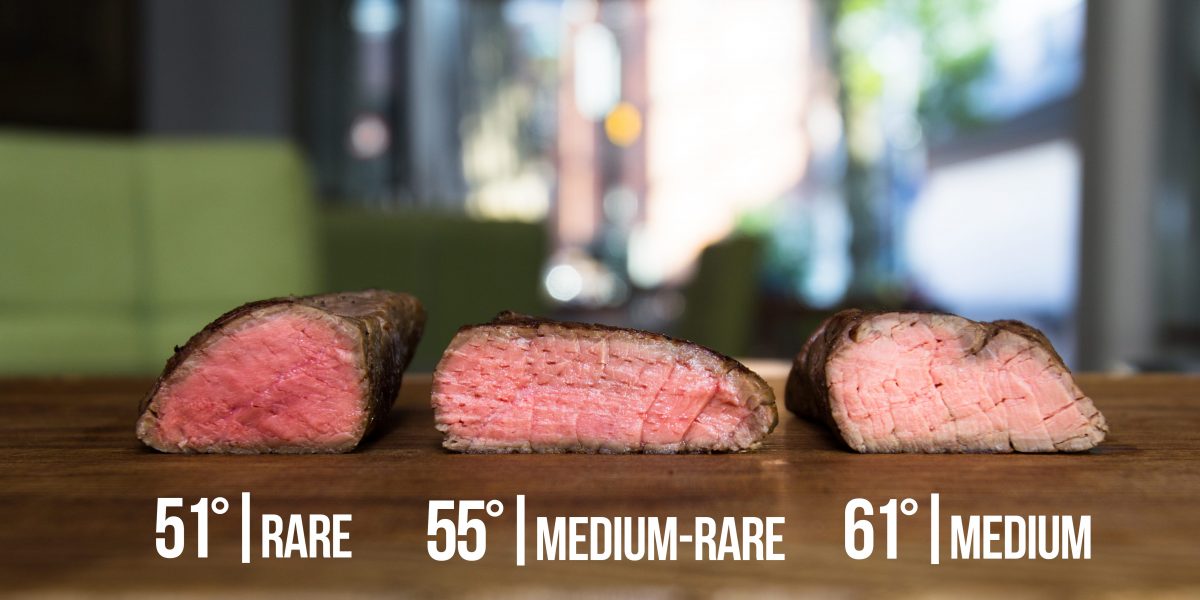
| Doneness | Celsius °C | Fahrenheit ºF |
| Rare | 50 – 52 °C | 122 – 125 °F |
| Medium rare | 53 – 58 °C | 127 – 136 °F |
| Medium | 59 – 63 °C | 138 – 145 °F |
| Medium well | 64 – 67 °C | 147 – 152 °F |
| Well done | 68°C + | 154 °F + |
[product=meat board]
Handy for cutting your steak
[/product]
[product=chef's knife]
Razor sharp, every time!
[/product]
Different types of steak
Each type of steak has its own specific taste and tenderness. To make it clear which types of meat are being discussed, examples are described below with explanations. This mainly concerns the following types of beef:
Beef tenderloin
Tenderloin is considered the softest and most tender piece of beef. This piece runs along the back and the loin. If the tenderloin is attached to the vertebra together with the loin, it is also called a T-bone. The reason for this is that the vertebra has the shape of a 'T'.
(Bull)steak
Steak is the general name for tender and lean muscle meat. The name comes from the English name ' beef steak ' and comes in many variations. But when you order it from the butcher, it is mainly cut from the thick parts of the topside. The fillet steak is cut from a part of the topside and the muscle part (the fillet) of the cow. The tenderness of the steak is determined by a number of factors, including the breed, age and sex of the animal. Furthermore, the maturation plays an important role in the quality of the meat.
Sirloin steak
The entrecote comes from the thin loin and is recognizable by its shape and the edge of fat. This fat edge is attached to the meat and gives off flavor when fried. So leave it on! The entrecote is slightly firmer than the tournedos and has slightly more flavor.
Ribeye
The rib-eye comes from the same part as the entrecote. In the ribeye, the fat edge runs through the meat. The name ribeye comes from the fact that, with a bit of imagination, the fat edge in the meat looks like an eye. A large piece of entrecote or ribeye is also called a Côte de Boeuf . Discover the ribeye sous vide recipe here .
T-bone
The so-called t-bone is the piece of meat that is between the ribs, like an entrecote, but with bone. Because of that, there is another piece of meat on it, namely the tenderloin. It is an ideal piece of meat for the real meat lover because there are two different steaks on it: tenderloin and entrecote. 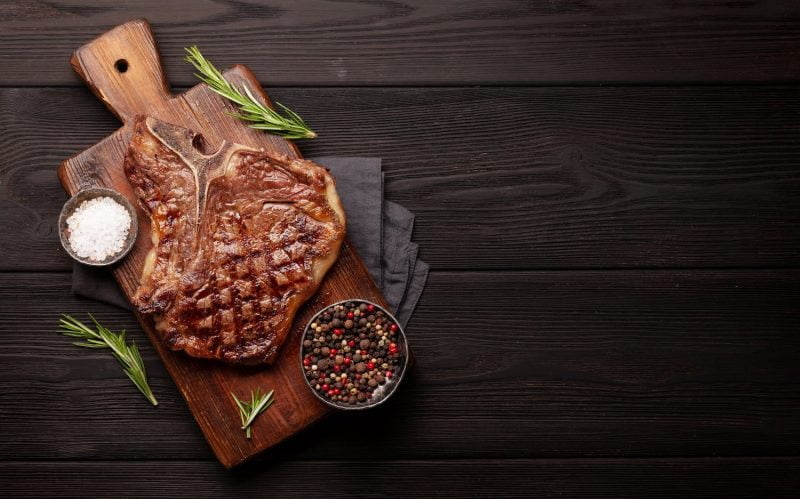
sukade
For a long time, the idea was that sukade was only stewed meat. Nothing could be further from the truth. Sukade is cut from the shoulder. A large tendon runs through the meat. This type of meat has a characteristic taste and structure. This makes this steak definitely worth preparing! Curious about sous vide prepared stew? Then take a look at the stew sous vide recipe .
Bavette
An increasingly popular piece of beef is the bavette. This piece comes from the so-called vang and is also called the vanglap . It is a piece of working meat from the underside of the beef. The structure is coarser but has a lot of flavor. Bavette is also called a vinkenlap and flank steak . A piece of meat with many names!
Tailpiece
A relatively unknown piece of meat in the Netherlands is the Picanha. This is also calledcalled tail piece . The piece is recognizable by its triangular shape and the clear creamy white layer of fat. The meat is on the back of the back above the tail, hence the name tail piece .
Jew's tenderloin
Diamond tenderloin , shoulder tenderloin or Jodensprung , is the piece of meat that is located between the shoulders of the cow. The Jodensprung owes its name because Jews are not allowed to eat meat from the hind leg due to dietary laws. The Jodensprung is at the front of the cow and so the Jodensprung may be eaten. View the sous vide Jodensprung recipe here.
Tenderloin
The tenderloin owes its name to the fact that the muscle ensures that the lungs move. The tenderloin runs along the midriff of the cow. This piece of meat is also becoming better known in the Netherlands, while it has been on the menu at French bistros for years. The tenderloin is also called the onglet .
Maillaird reaction
With meat, finishing is also required after the sous vide preparation. Because the meat is cooked slowly, it partly lacks the well-known Maillard reaction that occurs when frying meat. Because the lower the temperature at which it is cooked, the slower the reaction takes place. In short: the Maillard reaction does occur at a lower cooking temperature, but to a lesser extent.
The solution to this is simple: after the sous vide preparation, briefly fry on high heat. This creates that pleasant recognizable baking taste ! This reaction occurs when something is heated for a crispy crust or roasted taste. The three important elements for this reaction are:
- Sugars
- Amino acids
- Heating
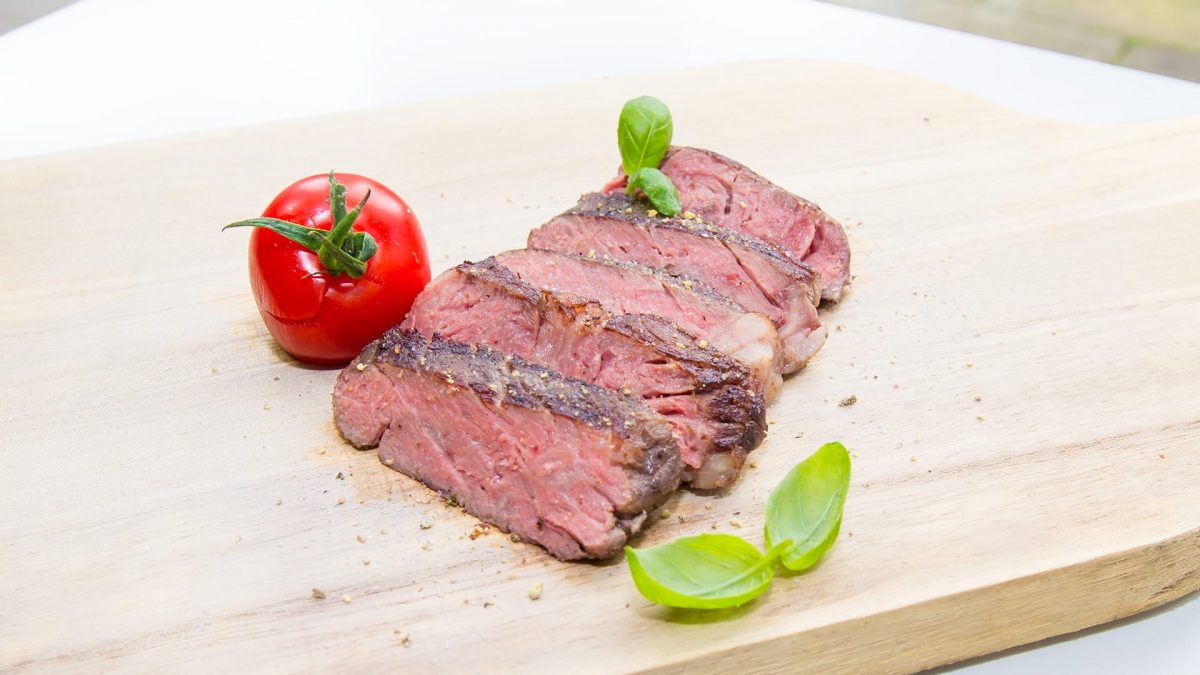
How exactly does it work?
In a Maillard reaction, the sugars in the meat give that specific smell and taste experience to roasted meat. There are several ways to create this reaction, for example, briefly frying it in the pan or browning the meat.
There are several ways to give the steak that crispy golden brown outside. Depending on which method you choose, it can be determined whether you can season the steak with salt and pepper before or after. When this should be done before or after, you will see in the next paragraph. A number of ways to give the steak that reaction are:
- Baking
- Roast
- Grilling
- Frying
Frying steak in the pan
The most common way to cook a steak is in a pan. This can be done before or after the meat has been cooked sous vide. Season the steak generously with salt and pepper beforehand. Then preheat the pan with oil, such as sunflower oil, peanut oil or olive oil. Briefly fry the steak in the pan and make sure the steak gets its golden brown crust. This takes less than a minute per side. Remove it from the pan, place the steak on a warm plate and serve immediately.
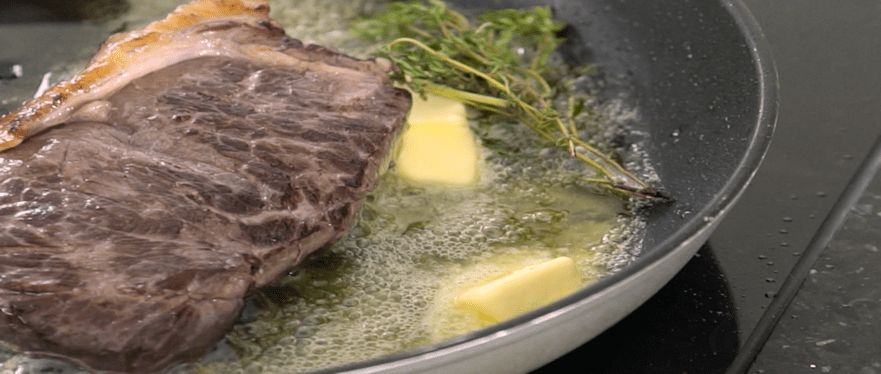
Roasting in the oven
Preheat the oven to 250 °C. Season the steak generously with salt and pepper. Place it on a rack in the oven for about three to four minutes. Then remove it, let the meat rest for a while and then serve immediately.
Grilling
Grilling can be done in a grill pan or on a barbecue. Make sure the grill is red hot, because you only want to give the steak that golden brown crust and not cook it. Grill the steak for about 1 minute and then turn it over. A big advantage of the charcoal from the barbecue is the beautiful grill stripes and the smoky flavor. Remove it from the grill and place on a warm plate or serve immediately.
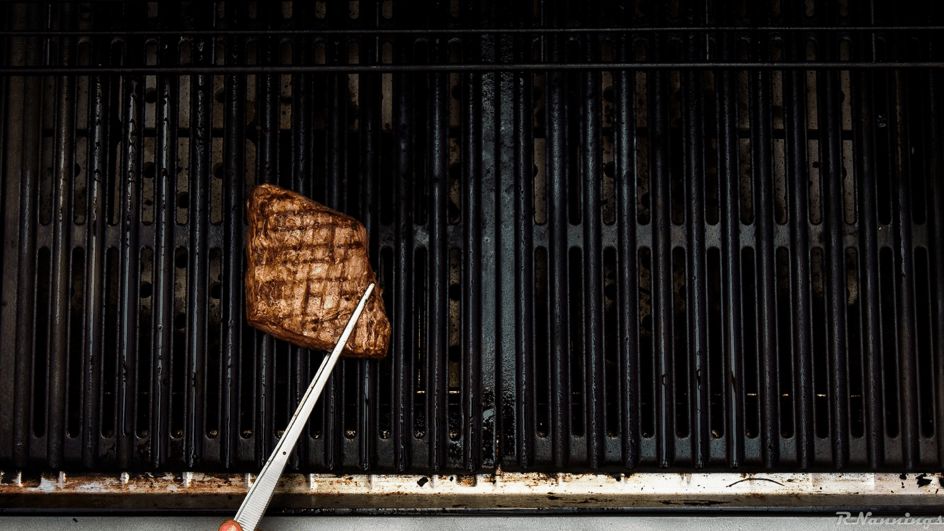
Frying
Yes seriously, deep frying. When deep frying, it is important that the steak is seasoned afterwards. Because the fryer is very hot, the pepper will burn immediately if it is added beforehand. Set the fryer to 200 °C. Pat the steak dry before putting it in the fryer and then lower it into the oil. The steak should be in the fryer for about 1 to 2 minutes. Remove it from the fryer and place on a warm plate. Season the steak and serve immediately.
Salt before or after?
There are many stories going around about whether meat should be seasoned with salt before or after cooking. Chefs or cooks often have different opinions about it. It is a fact that salt can change the structure of the meat. This is a matter of time, because the longer the meat comes into contact with salt, the more the structure of the meat changes.
When cooking a steak sous vide , it doesn't matter whether the meat is salted beforehand or afterwards. So you can choose to do this beforehand or afterwards. It works perfectly both ways.
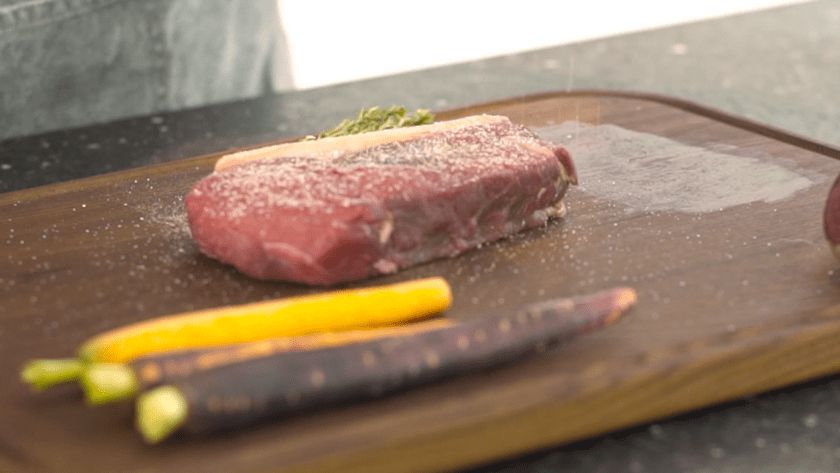
Preparation time for a steak sous vide
To find out how long to cook a steak sous vide, you need to know the thickness of the meat. Take a ruler or a tape measure and measure the meat. This table is mainly about the minimum time a steak should be in the water bath.
Just because a steak is twice as thick as a certain thickness in the table below, doesn’t mean the minimum cooking time is twice as long. As the thickness of the meat increases, it takes exponentially longer to reach the core of the meat and heat it. A 1-inch steak will be ready in 60 minutes, but it can sit in the water bath for an hour longer without cooking any further . That’s the beauty of sous vide cooking . While the steak is being sous vide cooked, you have the opportunity to cook the rest of the dish. See the table below for full guidelines on thicknesses.
| Thickness in centimeters | Thickness in inches | Duration in minutes |
| 0.60 | 0.25 | 23 |
| 1.25 | 0.5 | 31 |
| 2.5 | 1 | 60 |
| 5 | 2 | 173 |
| 7.5 | 3 | 354 |
Sous vide steak recipes
For the recipes below, you will definitely need a sous vide device. View our range of the best sous vide devices here . Or view one of the sous vide steak recipes below:
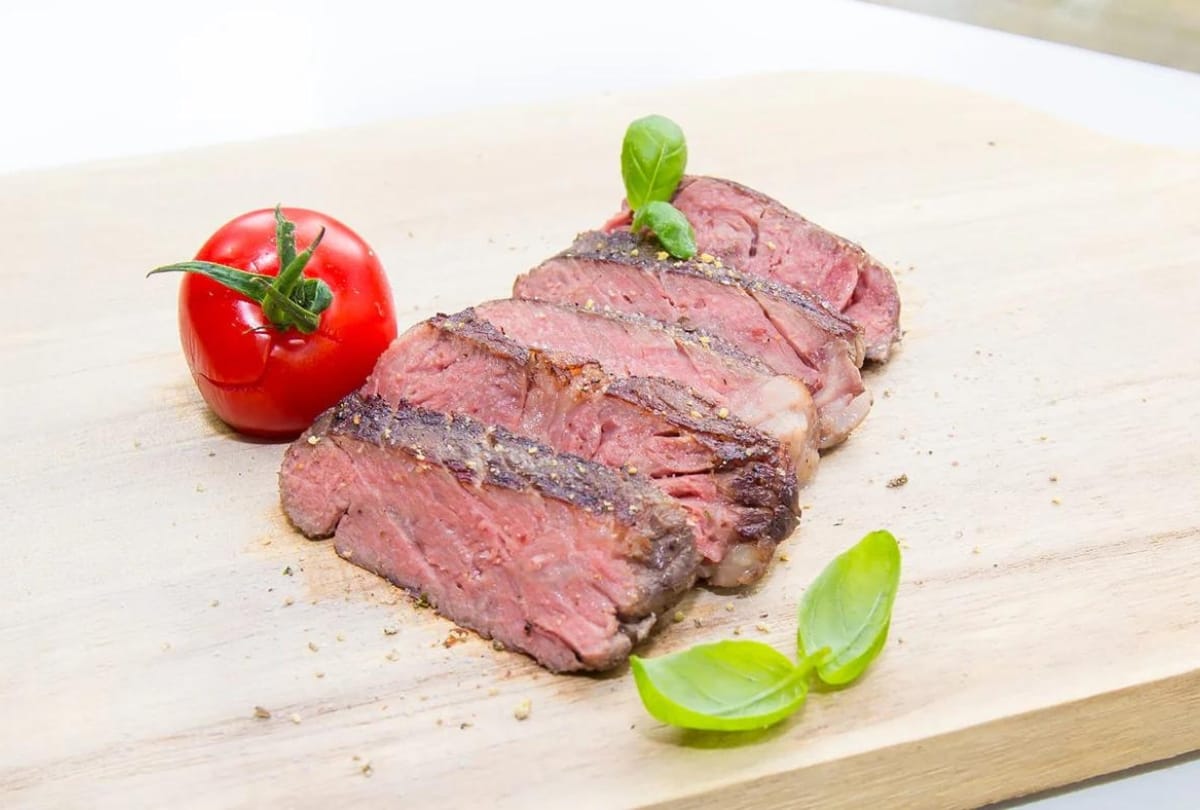
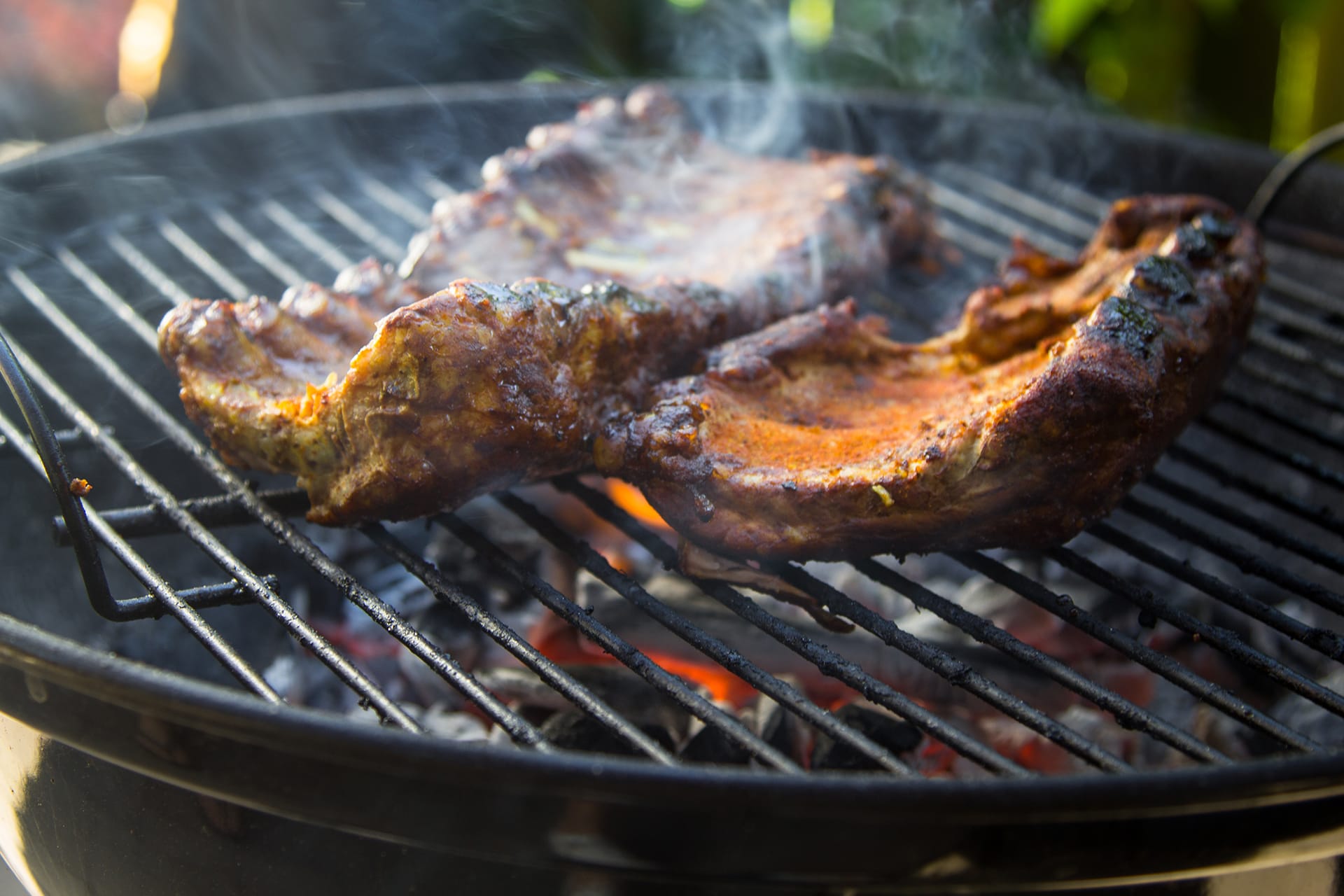
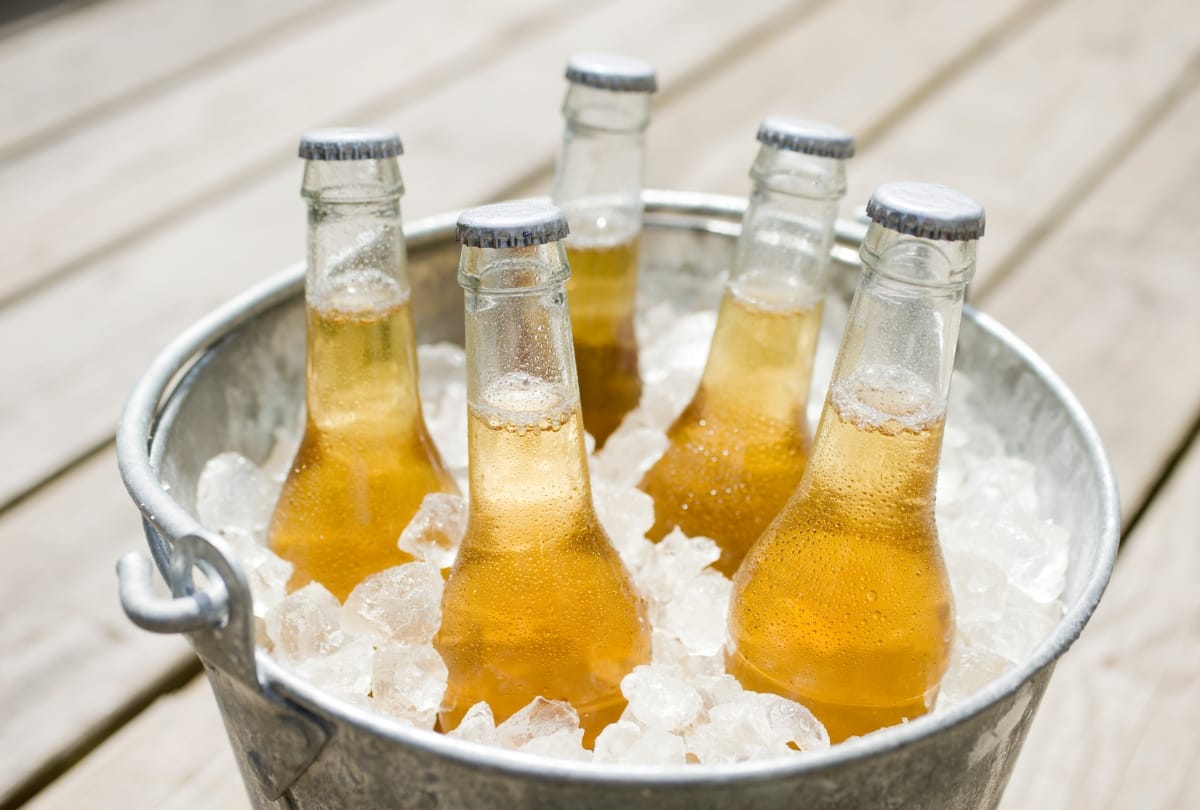
46 comments
whruberg@gmail.com
Fijne informatie op deze site, maar ik had eens gelezen dat de gaartijd quadratisch in verhouding staat tot de dikte van het vlees.
Bij de tijden onderaan dit artikel wordt de tijd verdubbeld bij dubbeldik vlees, in plaats van verviervoudigd…
Wat is juist?
jorick@souvy.nl
Hi Robin, dit is inderdaad niet het gewenste resultaat.. Heb je dit recept van sous vide ei al geprobeerd? Ik zou aanraden om stap 1, 2 en 3 te volgen.
ggielis51@gmail.com
Hallo,
Sous vide kalfsvlees 1 kg (dunne lende), 5 cm dikste zijde, welke temperatuur en gaartijd voor medium well aub ?
Is vooraf bruinen een optie ? Ik vind het namelijk vervelend in een open keuken op hoge temperatuur te bruinen (rook en overlast geluid afzuigkap voor de gasten)
Kan er eventueel ook bruin gegrild worden onder de voorverwarmde ovengrill ?
Dank !
r.tinnemeier@home.nl
Hallo Jorick,
Ik heb al een paar keer eieren sous vide bereid op 64 graden en 45 minuten volgens de tabellen op internet maar ik krijg steeds blubberig eiwit en de dooier is te droog! Zie het liever anders om! Wat doe ik verkeerd?
Hoort wel niet in dit onderwerp biefstuk, maar weet anders niet om deze te plaatsen.
vriendelijke groet Robin
mail@timdenouden.nl
Hoi Ben, dat kan zeker! Je zou de maaltijden thuis al kunnen garen en daarna kunnen invriezen. Opwarmen zou kunnen in de vacuümzak in een pan met warm water. Let er dan wel op dat het water niet warmer is dan de temperatuur waarop je het eten in eerste instantie hebt gegaard, anders zou het verder kunnen garen (zonde!). Je kunt de zak ook openmaken en de maaltijd vervolgens in een pan op het gasstel opwarmen. In dat geval zou ik je aanraden de maaltijd alsnog alvast wat te verwarmen in warm water zodat de kerntemperatuur al wat hoger is. Hierdoor hoeft de maaltijd minder lang te warmen in de pan, waardoor de garing nog steeds optimaal is en blijft. Ik hoop dat je zo een duidelijk antwoord hebt op je vraag! Groet, Tim van Souvy
Leave a comment
This site is protected by hCaptcha and the hCaptcha Privacy Policy and Terms of Service apply.